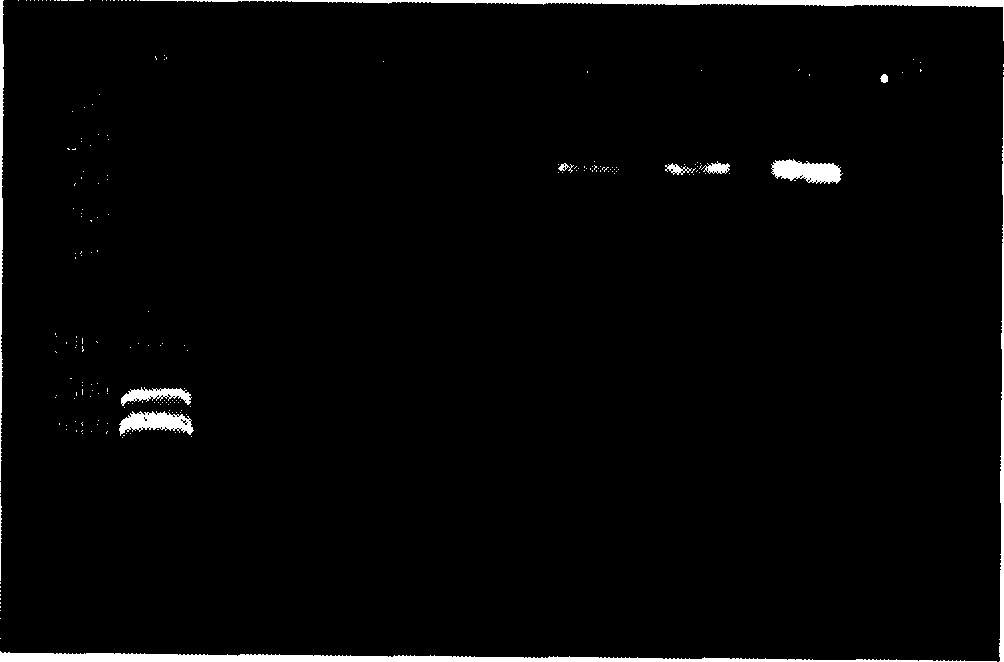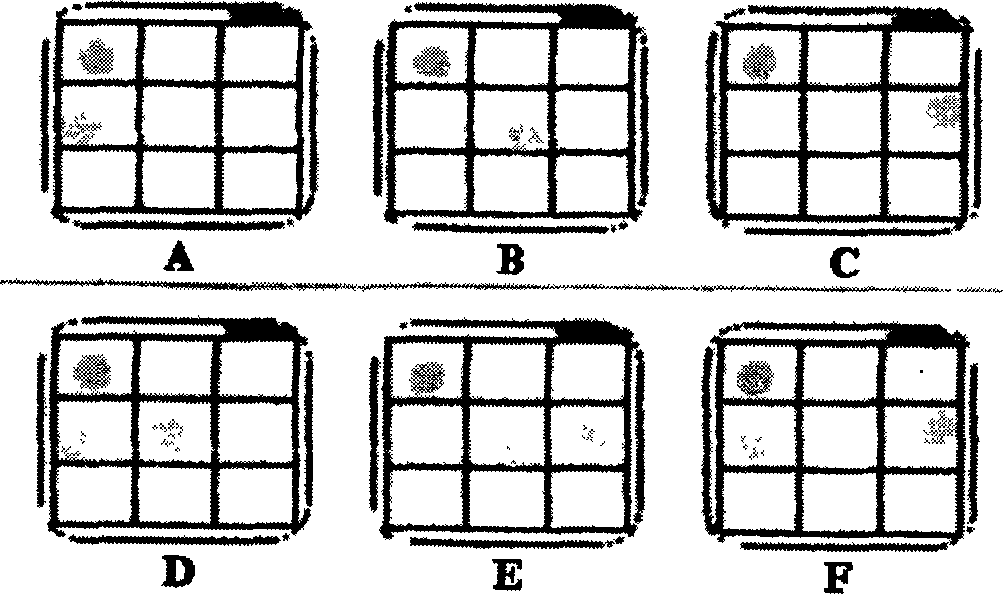Detection method of hepatitis B virus genome drug resistance mutation
A technology of hepatitis B virus and mutant type, which is applied in biochemical equipment and methods, and microbial measurement/inspection, etc., can solve the problems of cumbersome operation, high cost, and unfavorable development of primary hospitals, so as to improve the diffusion rate and simple operation Effect
- Summary
- Abstract
- Description
- Claims
- Application Information
AI Technical Summary
Problems solved by technology
Method used
Image
Examples
Embodiment 1
[0090] Embodiment 1: the extraction of serum DNA
[0091] Aseptically collect about 1ml of venous blood from the hepatitis B patient to be tested, let it stand at room temperature and 4°C for 2 hours and 1 hour respectively, then centrifuge (8,000rpm, 5 minutes) to separate and collect 200μl of serum sample. Then take 40 μl of serum sample, add an equal amount of DNA extraction solution to it, mix thoroughly and place in a boiling water bath for 10 minutes. In order to ensure that the virus particles contained in the serum can be fully lysed, the mixture was further left to stand at 4° C. for 10 hours. It was then centrifuged (10,000 rpm, 5 minutes) and 2 μl of the supernatant was collected and used for further PCR reactions.
Embodiment 2
[0092] Embodiment 2: PCR amplification of the fragment comprising YMDD motif
[0093] Take several tubes of single-person PCR reaction solution, add 1 μl UDG enzyme to each tube, and then directly add 2 μl template (or negative and positive standards), mix well and then centrifuge briefly (3 seconds). Then put each reaction tube into the PCR instrument, pretreat at 50°C for 3 minutes, and amplify according to the following conditions: 94°C for 5 minutes, then press 93°C for 30 seconds, 55°C for 30 seconds, and 72°C for 40 seconds, a total of 35 cycles, A final 72°C extension was performed for 7 minutes. The amplified products were detected by 2% agarose gel electrophoresis (see attached figure 1 ). The PCR amplification system used included: 1×qualitative PCR buffer, 0.2 mM dNTPs, 2 U Taq enzyme, 0.2 μM primers 1 (SEQ ID NO: 1) and 2 (SEQ ID NO: 2).
Embodiment 3
[0094] Example 3: Reverse dot blot detection of samples of three known genotypes
[0095]Before hybridization, preheat hybridization solution I (2×SSC-0.1% SDS) and hybridization solution II to 44°C for use. Take three 1.5ml centrifuge tubes according to the number of samples to be tested, add 0.5ml hybridization solution I to each tube and preheat to 44°C. After the PCR amplification product was denatured at 95° C. for 10 minutes, it was placed in an ice-water mixture for 4 minutes. Then take 1000 μl hybridization solution I+2 μl solution I (1000:2) mixed solution as the binding solution and store it at 4°C for later use, and take the mixture of solution II: solution III: solution IV (1900:200:1) (1.9ml solution II+ 0.2ml of solution III + 1 μl of solution IV) is used as a chromogenic solution and stored away from light for later use.
[0096] Before hybridization, fill the reaction chamber with distilled water, place the metal perforated plate, and turn on the negative pre...
PUM
 Login to View More
Login to View More Abstract
Description
Claims
Application Information
 Login to View More
Login to View More - R&D
- Intellectual Property
- Life Sciences
- Materials
- Tech Scout
- Unparalleled Data Quality
- Higher Quality Content
- 60% Fewer Hallucinations
Browse by: Latest US Patents, China's latest patents, Technical Efficacy Thesaurus, Application Domain, Technology Topic, Popular Technical Reports.
© 2025 PatSnap. All rights reserved.Legal|Privacy policy|Modern Slavery Act Transparency Statement|Sitemap|About US| Contact US: help@patsnap.com


